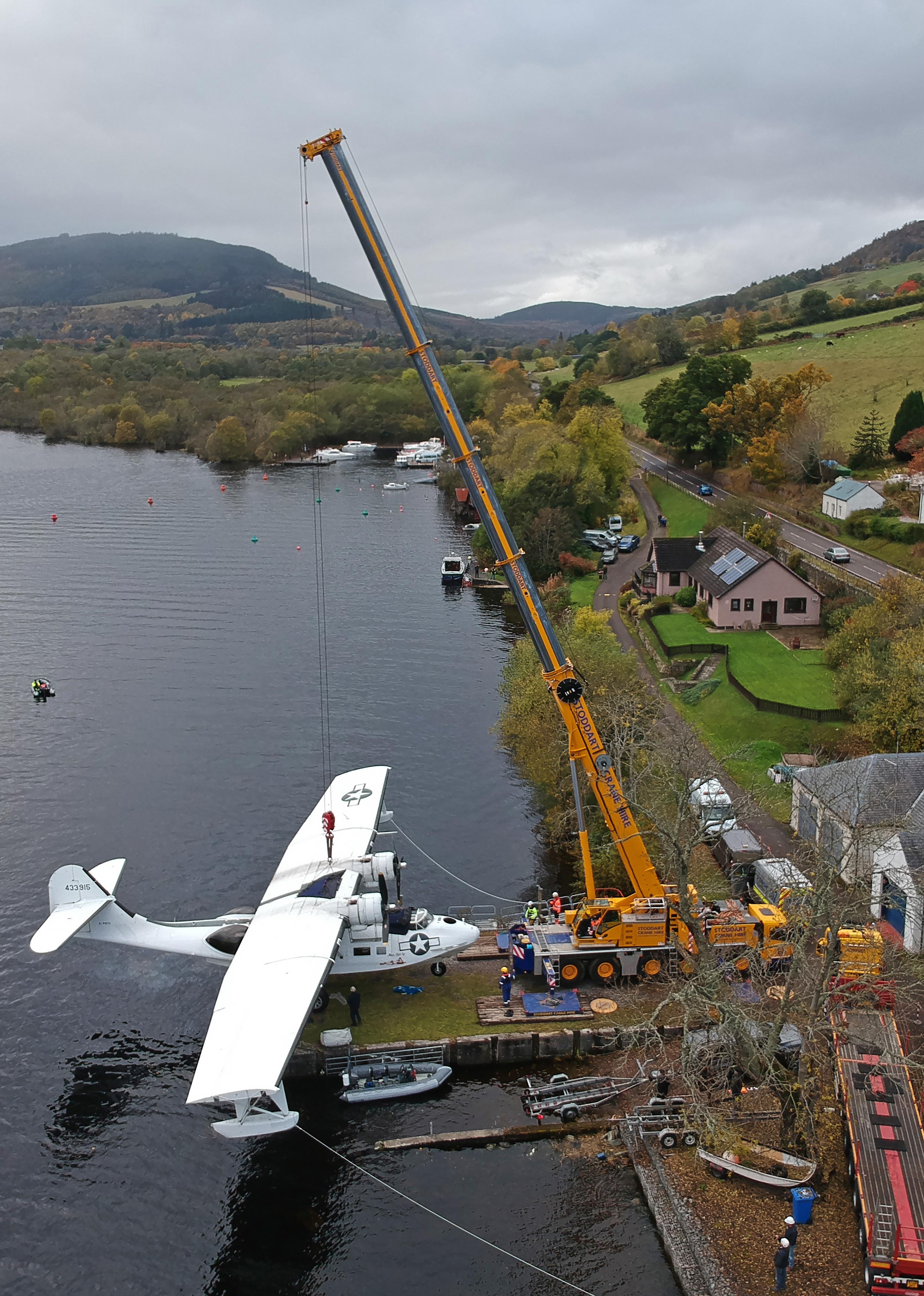
12 minute read
Lochdown Cat rescue…
When the UK’s only flying Catalina was stuck on Loch Ness with a major engine problem, a massive operation swung into action to get the aircraft home before the worst of winter hit. Matt Dearden tells the tale…
In case you’ve been living under a rock for the last couple of months, you might not have been aware of the most talked about ‘C’ word in aviation. No, not Covid-19 but Catalina! On 17 October 2020, the UK’s only airworthy Catalina flying boat, Miss Pick Up, had to be rescued by the RNLI following a problem with starting one of her engines. With only one functioning engine and no water rudder, a Catalina is all but uncontrollable on the water. With darkness setting in, she was at the mercy of the winds and waves so the rescue and subsequent tow by the RNLI to a mooring buoy was essential to the aircraft’s survival.
Advertisement
After a restless night wondering if the aircraft would still be there in the morning, our engineer, Garry Short, made his way up from IWM Duxford in Cambridge to see if the fault was simply a broken starter motor. Sadly, it turned out to be something deep within the engine related to the auxiliary gearbox preventing the starter motor from turning the engine over. It became apparent the aircraft would need to be taken to dry land for the damaged engine to be replaced.
I’ve been involved with the group since 2015 and this was the biggest crisis the group had faced since it was formed. As you can probably imagine, the ‘other C’ word had devastated our cashflow for the 2020 airshow season. Usually, the Catalina would be flying most weekends, either in the UK or abroad to help generate the much needed funds to keep her flying each year and well into the future. I took the initiative to set up a crowdfunding page once it became apparent the cost was going to be massive due to the logistics involved.
It is not feasible to do an engine change on the water and Loch Ness has nowhere an aircraft with a 104ft wingspan can exit the water up a ramp. The only option would be to use a very large crane (150 tonnes!) to lift her out of the water to somewhere where the engine change could be completed. We were very grateful for the help offered by the landlords of Temple Pier West on the shore of Loch Ness, Morag Menzies and Gordon Menzies, who allowed us the use of it to accomplish the engine change. Gordon also rented us some workshop space for the engineering while the engine was off.
Further crane hiring sessions would be needed for the engine change as well as boat hire, transport costs to bring the spare engine up from IWM Duxford, various other logistical costs and a final big crane session to lift the aircraft back onto the loch – the total cost was going to be just shy of £30,000.
The response to the crowdfunding call was simply staggering! Within just a few days we had raised £20k which really spurred on our team of volunteers who were initially somewhat down in the dumps over the task at hand to get the Catalina home. News of our plight spread both fast – and worldwide – which was very unexpected. Eventually, we managed to raise a little more than the original amount, and that extra funding will go towards the cost of repairing the damaged engine. The generosity of everyone who donated cannot be overstated, especially in these current times. I think everyone was just looking for some positive news among the continual doom and gloom.
With funding well underway, the first crane session was booked in to lift the aircraft from the water just a few days after the initial troubles. This was the riskiest operation along with the final crane session to restore her to the water. A few years ago, another Catalina was destroyed during a lifting operation in the USA. It was being removed from the water and onto a barge with a large crane following some issues during the filming of a Nicholas Cage movie. However, instead of using the Catalina’s designated two lifting points in the centre of the wing, they chose to use slings in various non-structural areas which sliced the aircraft into four pieces during the lift and wrote it off.

The Catalina is very hard to manoeuvre on one engine, requiring lots of power!
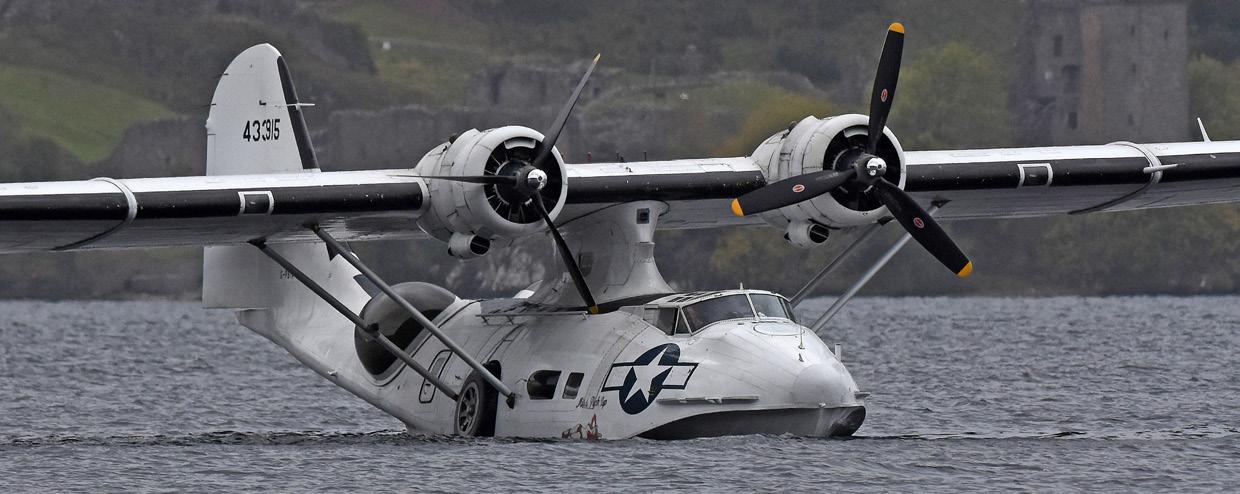
Failed engine obvious from the feathered prop
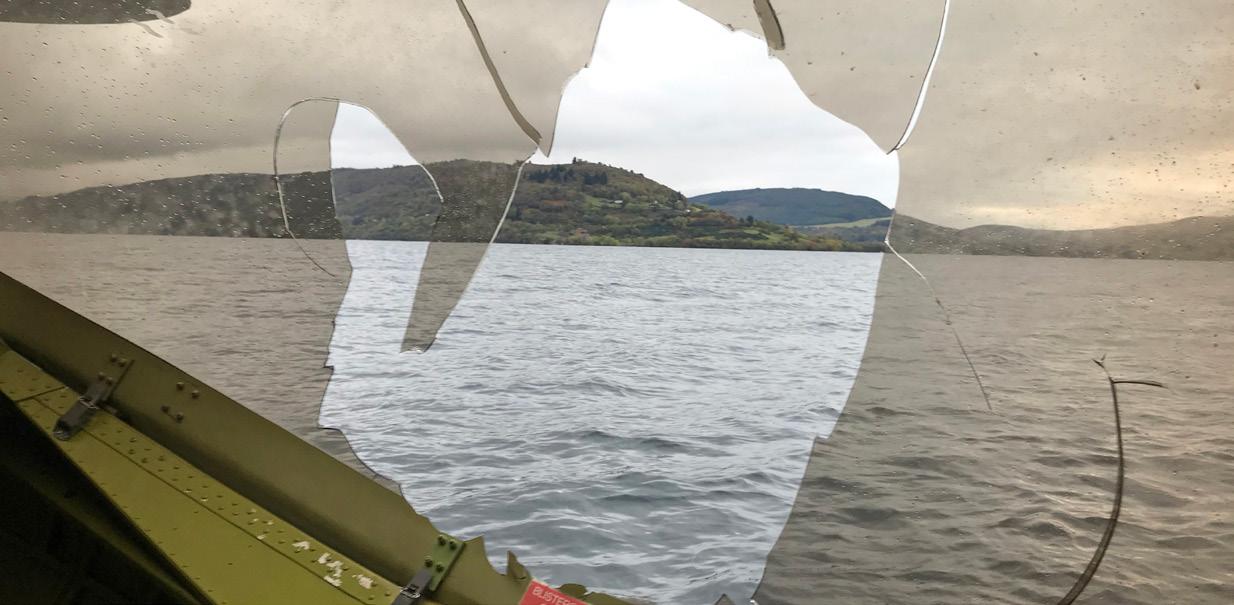
Shattered rear blister following the result of contact from a ‘helpful’ boat
As far as our Catalina group knows, the two lifting points on Miss Pick Up had never been used in her 77 years of flying. Of course the airframe undergoes thorough inspections each winter, with many of the structural parts undergoing NDT (non-destructive testing), however you can never tell for certain if something will work until you try it!
Thankfully the lifting points worked exactly like they were designed to and the lift onto dry land was a non-event in the end.

Stressful wait on a mooring buoy while the problem is diagnosed
Scottish winter
It took another couple of weeks to complete the engine change which went pretty smoothly considering it was accomplished outside and away from our home base of Duxford at the beginning of a Scottish winter.
The group always keeps a spare overhauled engine in Duxford in case of these sorts of eventualities with old piston engines but changing an engine out in the field is not something that’s been done before. The overhauled engine is just a bare engine without any of the ancillaries attached such as the starter motor, manifolds, carburettor etc. These would have to be transferred from the damaged engine once it was removed from the aircraft, so it was fortunate that Gordon had a small workshop the team could use for this.
The bigger delay was the repairs to the port blister window at the rear of the airframe that was damaged by a boat who came to help following the initial engine problems. Our Catalina no longer has its original wartime blisters. These were removed after the war when the aircraft was converted to a water bomber and lost along the way. Once she was finished being a water bomber, new larger one-piece perspex blisters were fabricated and installed in their place. Repairing the damaged one required some specialist fabrication skills that took time to source and implement. While we have a spare Perspex blister in the USA, it would have taken even longer to get this shipped to Loch Ness, hence the decision to make a temporary repair to the damaged one for the flight back to IWM Duxford.

ge becomes even more obvious when you see all the accessories to the rear of the engine. Almost everything here will need to be removed and replaced
Finally, on 30 November 2020, everything was in place. The flight back to IWM Duxford was planned in two parts. The first was flying the Catalina off Loch Ness to Inverness Airport where it would be refuelled before continuing on to IWM Duxford.
The biggest challenge was wind. While the Catalina can be operated on the water perfectly safely in winds up to 15kt or so, when she’s suspended by a single cable in the centre of her mass, any wind at all will cause her to weather cock into wind, the fin and side of the aircraft acting like a giant sail. As the winds looked to be lightest through the night, the best compromise would be to do it at daybreak and then immediately fly to Inverness.
On 1 December 2020, the team awoke at 0530 in order to be in place at the quayside by 0630 ready to take advantage of the early morning light winds.

Tight fit for a big crane down Gordon’s lochside home driveway

De-cowl and prop off

…before lifting the whole power-unit off the airframe. Alan, one of our volunteers inspects the damaged engine

Again, homeowner Gordon very kindly loaned us some workshop space to do the hundreds of items involved in an engine swap – vital in the cold Scottish winter weather!

With the engine refitted, it was time for the final big lift...
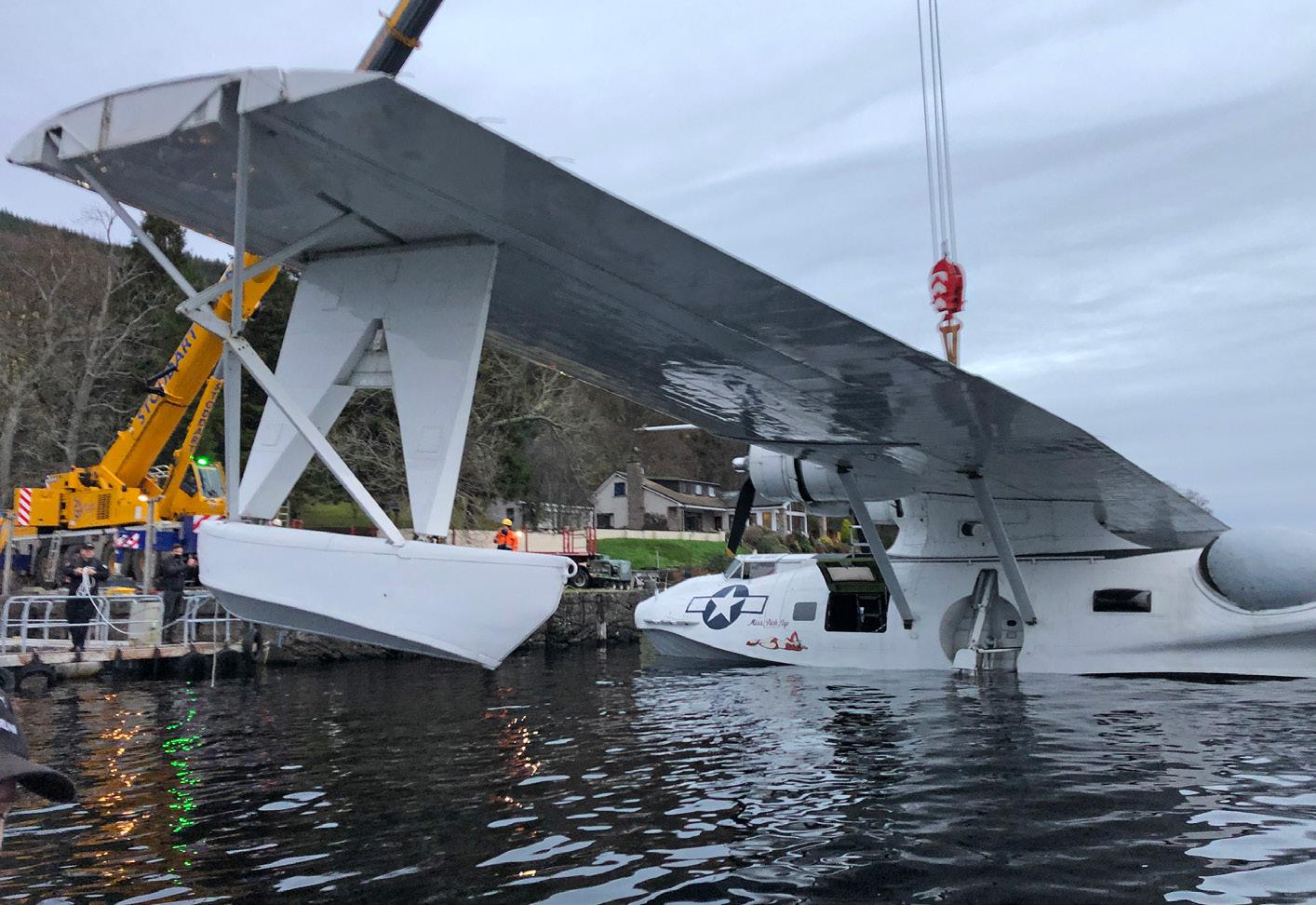
...which was perfectly executed by the Stobart Crane team. Note patched blister on left rear fuselage
With the air temperature just above freezing and sunrise not arriving until around 8am, the crane hire chaps got into place while the flight crew of Paul Warren Wilson (our chief pilot) and myself ran the engines up before the lift.
It was a surreal moment sitting in the cockpit, lit by torchlight, looking out towards a giant yellow crane in front of us and the dark and cold waters of Loch Ness to the sides and behind. It was freezing cold. I was wearing six layers and still felt cold. I thought about all those WWII crews who would have flown this very aircraft in similar if not colder conditions. Everything looked familiar, but also completely alien.
Despite the cold, both engines fired up as they always had done (apart from that time six weeks ago!). With the oil cold and thick, the rpm was kept low to keep the pressure down. With them thoroughly warmed up, the props were cycled and mags checked. All was well with the big Cat, so Paul and I vacated the aircraft and left it to the crane and boat crews to get on the most critical part of the whole operation.
The crane’s cable was attached to the Catalina’s lifting points and everyone held their breath as she was lifted into the air once more. With some deft crane manoeuvring, Miss Pick Up was returned to the waters of Loch Ness for the final time. There were three boats attached via lines to the Catalina, one on each wingtip attached to the floats and one at the stern. Only once the crews were satisfied they had the aircraft under control on the water would the crane hook be disconnected and the Catalina towed away from the quayside. Even though there was barely a breath of wind, the aircraft was still trying to weathercock and point into wind.
With the aircraft safely away from the quayside, I hopped into a tender with Paul and our crew chief Chris Hodson for the short ride out to the aircraft. Stepping in through the side entry, as so many crew would have done before us, was a special and proud moment. With the engines still warm from earlier, we started them up and water taxied the aircraft out into the main channel of the Loch ready for the take-off run.
Crashing waves…
When on the water, the Cat is always travelling forwards because piston engines are always producing some thrust. To complete our pre-flight checks, we had to increase the power on one of the engines to steer the aircraft into an orbit on the water. The waves in the main channel were surprisingly large and were crashing over the cockpit and temporarily restricting the view ahead every time we turned through into wind. I had never seen anything like it from the cockpit of an aircraft. It felt like we were in a submarine, a very leaky one with large amounts of water finding its way through the gaps in the sliding windows. I was glad my most outer layer of clothing was waterproof.

Not really shorts weather… it was cold and a hat was definitely required for the pre-flight!
Matt Dearden
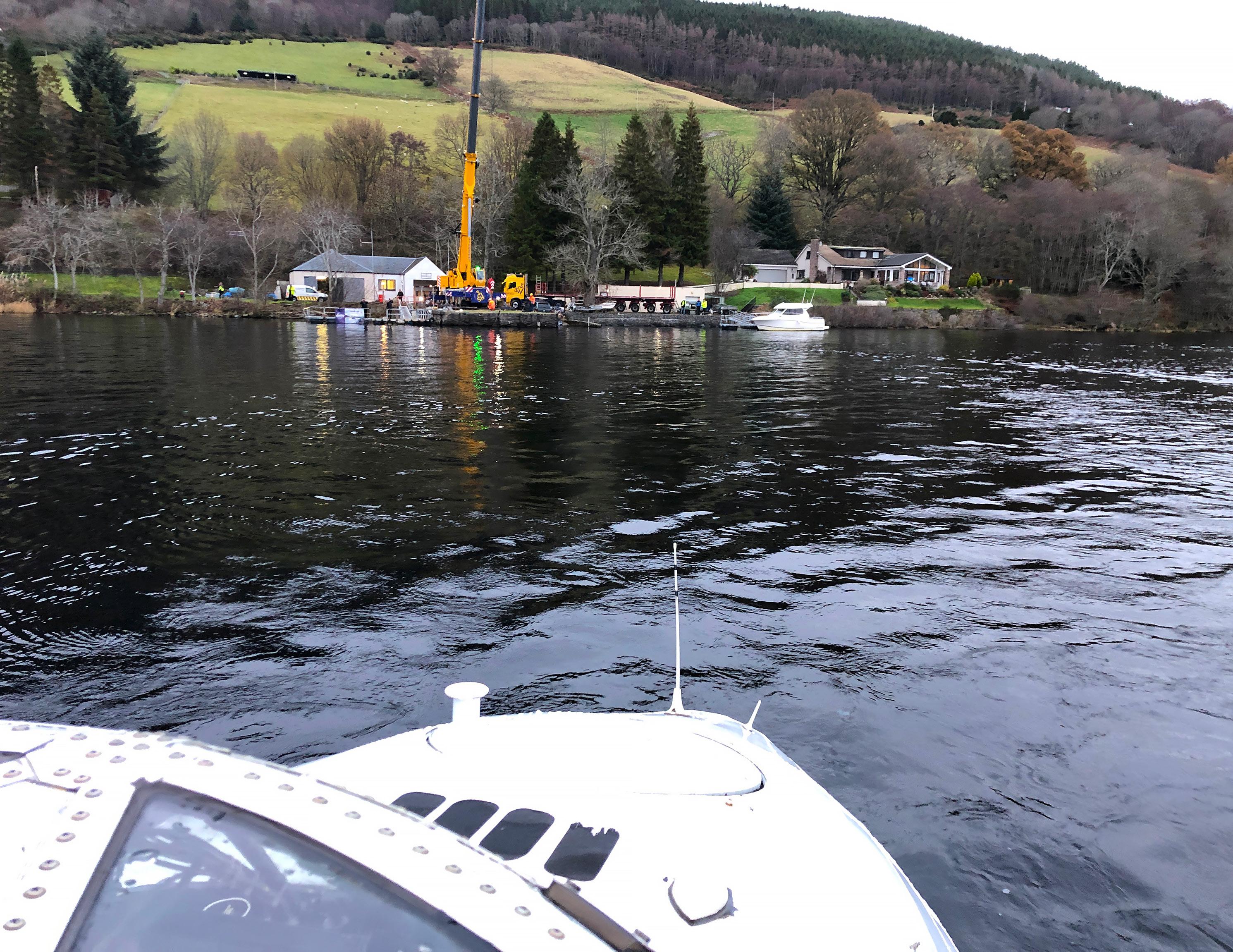
Saying goodbye to our temporary home on the shore of Loch Ness

The good thing about a flying boat, is large bits of water become potential forced landing options
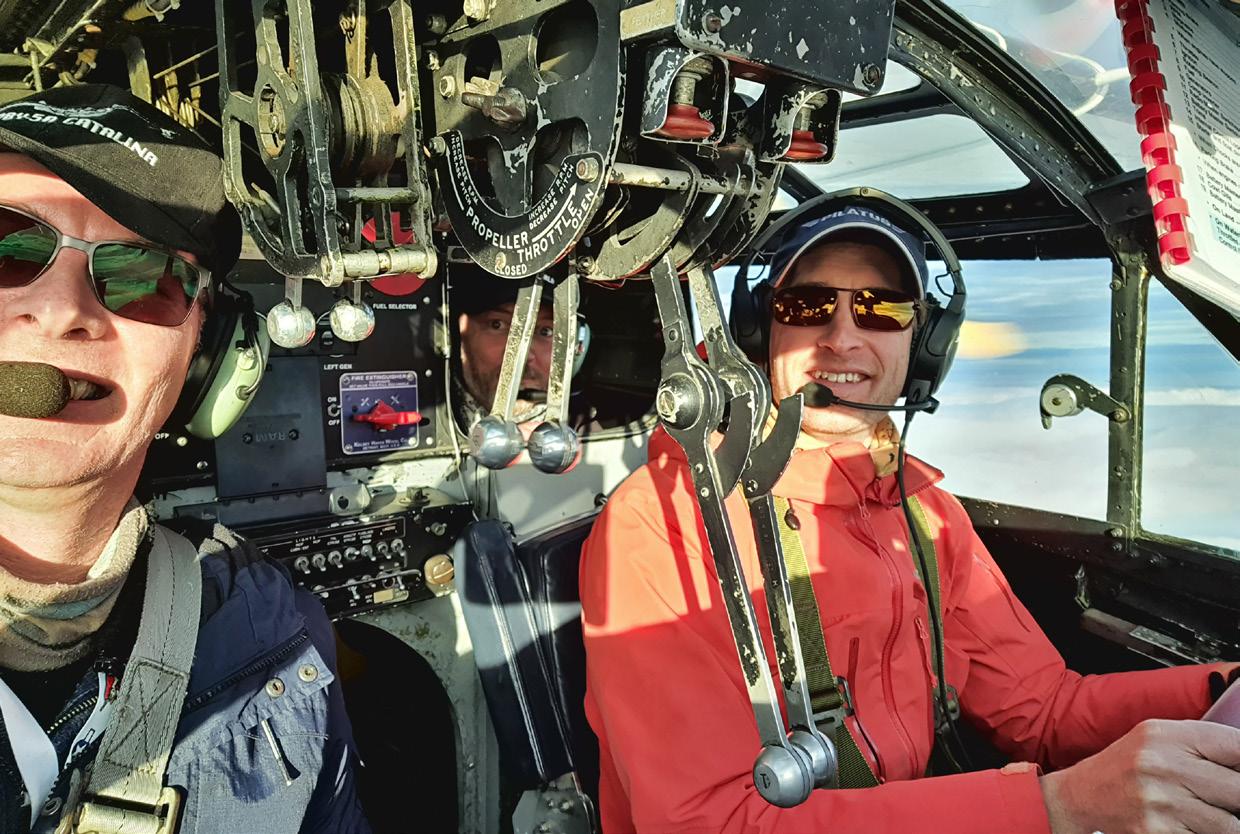
All smiles from Capt. Matt, FO Rich and crew-chief Chris
The wind was picking up, but with the Catalina back in its element, it was all systems go! We powered up the engines for take-off and she leapt out of the water, skimming the tops of the waves before lifting gracefully into the air. The quick flight over to Inverness was a massive relief for everyone. The newly replaced starboard engine felt a little rough and we could feel a few more vibrations than normal in the cruise but all indications were normal. Even if it had stopped, we were going to Inverness anyway!
It took some time to get the rest of the crew from Loch Ness to Inverness Airport via road. Paul had other commitments and so left via road, leaving me in charge for the rest of the return to IWM Duxford. Garry had a good look over the starboard engine and found the rough running to be due to an HT lead that had come loose. It is a testament to the whole team that this was the only fault after six weeks of maintenance in a remote location.
Unfortunately, the airfield at IWM Duxford was closed due to Covid-19 but had agreed to open especially for us on the Wednesday. However, if we stayed in Inverness for the night, that would increase the risk of us getting stuck waiting for a weather window large enough to fly the near 500 miles back from Scotland to Cambridge under VFR conditions. The decision was made to fly as far south as possible on Tuesday afternoon to minimise that weather risk. With limited daylight hours, Tatenhill in the Midlands was chosen, just 100 miles from IWM Duxford.
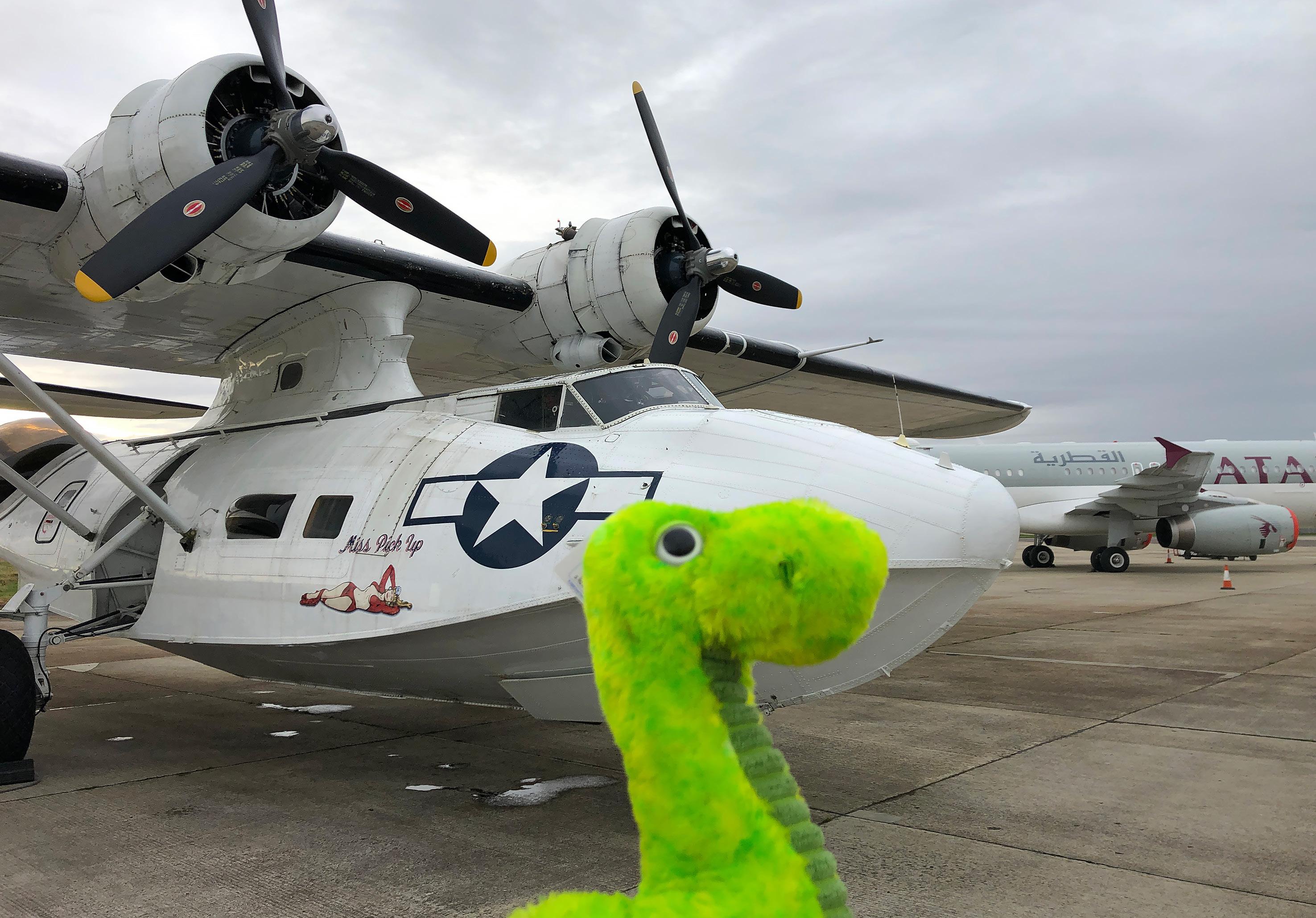
Saying goodbye to our temporary home on the shore of Loch Ness
The flight south went perfectly. Both engines behaved and the blister window repair held up perfectly. The views throughout the flight were stunning, taking in the Scottish Highlands, Lake District and Peak District en route in the watery winter sunlight.
Miss Pick Up touched down some two-and-a-half hours after departing Inverness for her night stop just before sunset. We put her to bed for the night under the stars and hoped the skies didn’t stay too clear as frost would have presented a further problem. Like all aircraft, she cannot fly with ice on her wings.

Watery sunset heralds the end of day one of the flight home
Thankfully the skies did cloud over enough and kept the frost away. With the en route weather looking suitable and Miss Pick Up raring to go, we took off into the winter skies once more for the final time that year. After another smooth flight, Miss Pick Up touched down in IWM Duxford on Runway 24 at 1148 on Wednesday 2 December, having spent over six weeks stranded at Loch Ness.
Thank you again to everyone who has donated to this rescue mission. We are eternally grateful to you all. Please DO come and see us next year at IWM Duxford where we would be delighted to show you around Miss Pick Up and thank you in person for your generosity.
A lot of people have asked if there will be a documentary about the whole operation and I am pleased to write that yes, there will be! The guys from Plane Resurrection followed us throughout the mission, so look out for it during summer 2021 on your TV!

Proudly holding up the Saltire – with help from Nessie. To all those who helped us out in Scotland and with the crowdfunding, a big thank you from the team!

On the shores of Loch Ness, Miss Pick Up gets a lift from a 150 tonne crane










